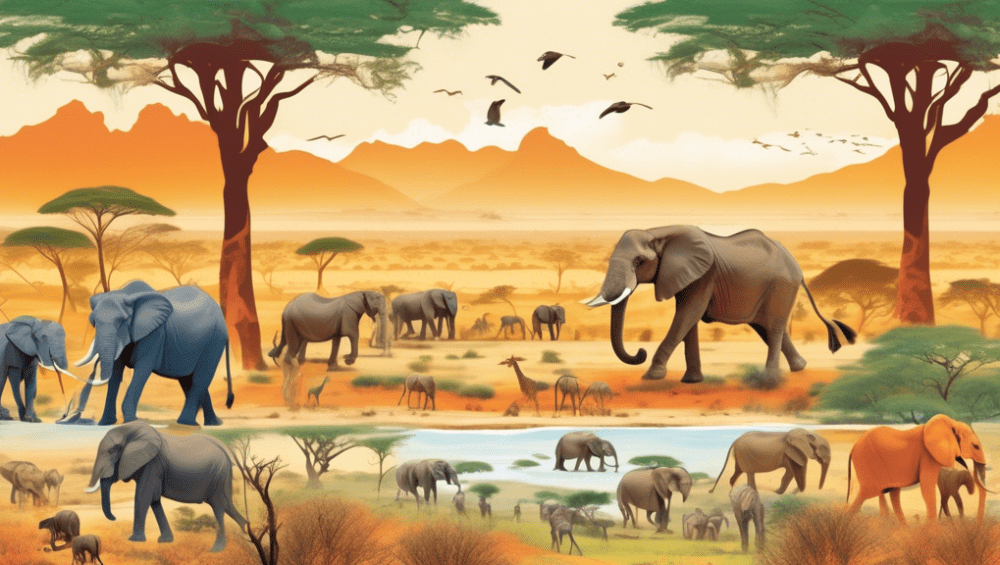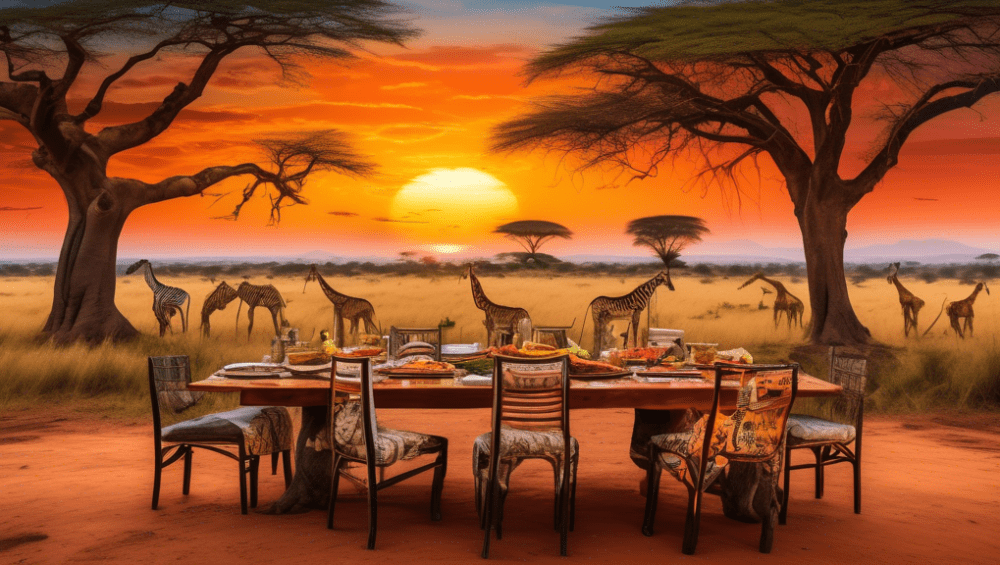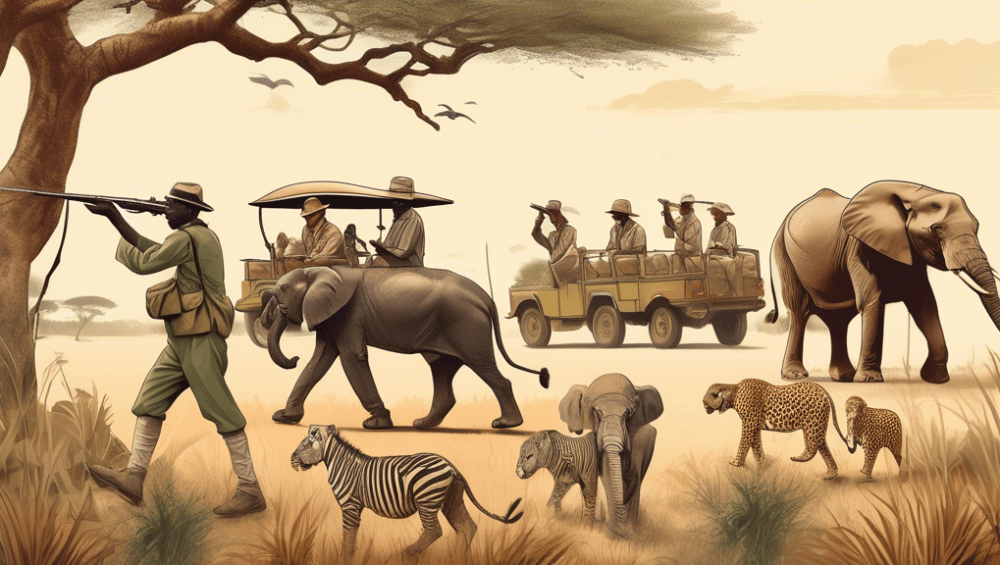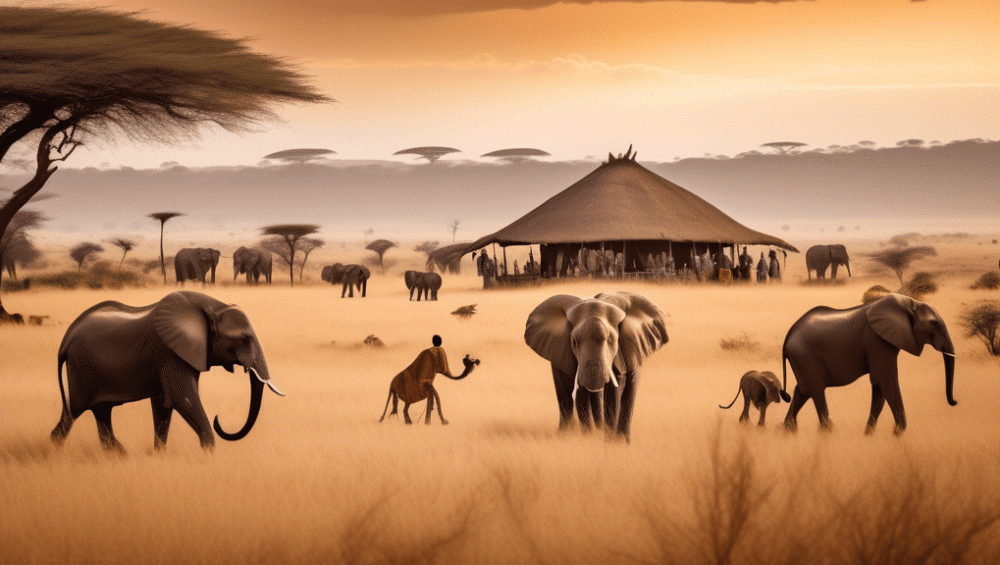How to Choose the Right Safari Package in Kenya
Picture this: Miles of untamed wilderness stretching out before you, dotted with acacia trees, teeming with the majestic wildlife that’s usually confined to the pages of National Geographic. Welcome to kenya Kenya, a top-tier safari destination that offers an unparalleled adventure through some of the world’s most iconic landscapes. But, hold on a second, before you jump into this wildlife wonderland, there’s one crucial step you mustn’t overlook – choosing the right safari package.
Why is this so important? Imagine gearing up for the adventure of a lifetime only to find that your safari package doesn’t quite match your expectations. Maybe the accommodation isn’t what you envisioned, or perhaps the sightseeing stops don’t align with your wildlife bucket list. Trust me, selecting the right safari package can make or break your dream African adventure.
So, what exactly should you look out for? Factors like the type of safari experience you crave, the duration of your trip, the kind of accommodations you prefer, and the activities or wildlife encounters you’re hoping for all come into play. Is your heart set on a luxury experience or are you leaning more towards a budget-friendly option? Are you planning a quick getaway or a week-long escapade? And let’s not forget about where you’ll lay your head at night and the creatures you’re eager to see – from the Big Five to the lesser-known but equally fascinating species.
In this guide, we’ll break down everything you need to know about picking the perfect safari package in kenya. From delving into the types of safari experiences and the popular destinations to considering the different pricing options and offering practical tips for an unforgettable journey – we’ve got you covered. So, buckle up and get ready to embark on an adventure that you’ll remember for a lifetime. After all, the right safari package can turn a great trip into an extraordinary one.
Introduction to Safari Packages in Kenya
Overview of Kenya as a Top Safari Destination
When you think of the quintessential African safari, chances are that kenya flashes to your mind. And there’s a reason for that! kenya is home to some of the most diverse and breathtaking landscapes on the continent. It’s like stepping into a page of a National Geographic magazine, only without the high subscription costs. From the savannahs of the Maasai Mara to the elephant herds in Amboseli with Mount Kilimanjaro as a backdrop, kenya Kenya is a veritable Eden for wildlife enthusiasts. But what makes it truly special?
I remember my own trip to kenyaKenya. I was knee-deep in planning, scrolling through endless options and honestly feeling overwhelmed. There were names like Big Five Safaris, Luxury Tented Camps, and Eco-Friendly Adventures all vying for my attention. With such diversity, it soon became clear that selecting the right safari package was not only important but crucial to genuinely experiencing kenya Kenya’s wonder.
Importance of Selecting the Right Safari Package
Choosing the right safari package can be a game-changer. Why? Because a safari is not just a vacation; it’s an adventure of a lifetime, a chance to reconnect with nature and discover wildlife in their real habitat. Picking the right package ensures your comfort, safety, and enjoyment, turning your trip into a 5-star experience rather than a 3-star disappointment. Plus, let’s be real—safaris aren’t the cheapest vacations out there. You want to make sure every penny counts. How do you do that? By being savvy and understanding the key factors that will influence your choice.
Key Factors Influencing One’s Choice
So, what exactly should you be considering when picking a safari package? Is it just about the price point or the number of animals you’ll spot? Not quite. Several other things come into play, and here are the ones you really want to keep an eye on:
- Type of Safari Experience: Are you going for a luxury escape with all the bells and whistles, or are you more of a budget-conscious traveler? Maybe you’re thinking of a private, intimate experience versus a group setting where you can meet new people.
- Duration of the Safari: How many days are you planning to be out in the wild? Do you want a quick 2-day weekend adventure or a comprehensive 10-day exploration?
- Accommodation Options and Amenities: Tents, lodges, or treehouses—what’s your style? Some packages offer luxurious lodgings with en-suite bathrooms and gourmet dining, while others might be more rustic, closer to nature but with fewer frills.
- Safari Activities and Wildlife Viewing Opportunities: Are you more interested in game drives or perhaps a walking safari intrigues you? Maybe you’re eager to experience a hot-air balloon ride over the Mara. Different packages cater to different kinds of activities and animal sightings.
By factoring in these elements, you’ll be better equipped to narrow down your choices and select a safari package that aligns with your interests, budget, and expectations. Trust me, when you’re face-to-face with a majestic lion at sunrise or watching a herd of elephants cross a river, you’ll be glad you worried about the details beforehand.

Key Elements to Consider When Choosing a Safari Package
Type of Safari Experience
First things first, what’s your style? Are you dreaming of a luxurious escape where you’ll be sipping gin and tonics on a spacious deck while gazing at the savannah? Or perhaps you’re more of a budget-savvy adventurer eager for a more rugged experience? Deciding between a luxury or budget safari is crucial.
Take my friend Sarah, for instance. She opted for a luxury safari package in the Maasai Mara. Her accommodations were top-notch, complete with gourmet meals and guided tours by highly experienced naturalists. On the flip side, I once embraced a budget safari in Tsavo National Park, staying in tents and cooking our meals over a campfire. Both experiences were unforgettable, but they catered to very different desires and budgets.
Then there’s the choice between group or private safaris. A group safari can be a fantastic way to meet new people and share expenses, but it comes with the trade-off of following a set itinerary and sharing your space with others. A private safari, albeit more expensive, gives you the freedom and flexibility to tailor your journey to your specific interests.
Duration of the Safari and Itinerary Details
How much time do you have? The duration of your safari is another critical factor. You can go on a whirlwind three-day tour of one park, or you can spend a couple of weeks exploring multiple regions. It’s all about how deeply you want to dive into the experience.
When my brother visited kenya, he chose a ten-day safari across multiple parks, including Amboseli, Samburu, and the Maasai Mara. His multi-park itinerary allowed him to see a diverse range of landscapes and wildlife, from the iconic elephants against Mount Kilimanjaro to the big cats of the Maasai Mara. Compare that to a shorter, park-specific safari that offers a more focused, but perhaps less varied, experience.
Pay close attention to the itinerary details. Some packages cram activities into each day from dawn to dusk, while others offer a more relaxed pace, giving you time to savor each moment. Know what suits your travel style best.
Accommodation Options and Amenities
Let’s talk about where you’ll be laying your head after an exhilarating day of wildlife spotting. The type of accommodation offered can significantly impact your safari experience. From five-star lodges and glamping to basic campsites, there’s a wide array of options to choose from.
For example, the luxury lodges in Maasai Mara often come with plush bedding, en-suite bathrooms, and even infinity pools. At the other end of the spectrum, some budget-friendly safaris in Tsavo offer clean but basic tents or cabins with shared facilities. Think about what level of comfort and amenities you need to fully enjoy your trip.
Also, consider amenities beyond just where you sleep. Are meals included? What about Wi-Fi, laundry services, or guided game drives? These can vary significantly from one package to another and can make a huge difference, especially if you’re traveling with specific needs or preferences.
Safari Activities and Wildlife Viewing Opportunities
Lastly, but certainly not least, what do you want to do and see on your safari? One of the biggest draws of a kenyan safari is, undoubtedly, the wildlife. But different packages offer varying activities and opportunities for wildlife viewing.
Maybe you dream of witnessing the Great Migration in the Maasai Mara, where millions of wildebeest and zebras move in a massive, thrilling spectacle. Or perhaps bird watching in Samburu sounds more appealing. Do you want a walking safari, a hot air balloon ride, or night game drives? These activities can drastically enrich your experience but might not be available in all packages.
I once took a night game drive in Amboseli National Park, and the thrill of seeing nocturnal animals like leopards and hyenas in action was beyond compare. However, such specialized activities are sometimes offered as optional extras, so it’s essential to check what is included in the package and what incurs additional costs.
In summary, picking the right safari package comes down to understanding your own preferences and priorities, coupled with a bit of careful planning. Whether it’s the type of experience, the duration, accommodations, or activities, each element plays a vital role in crafting a truly memorable kenyan safari. Don’t rush this decision—take your time to explore the options and align them with what you envision for your adventure.

Popular Safari Destinations in Kenya
Maasai Mara National Reserve
When you think of a kenyan safari, what’s the first location that pops into your mind? For many, it’s the Maasai Mara National Reserve. And, honestly, it’s no wonder. Picture this: vast, rolling grasslands filled with the drama of wildlife sightings. It’s the stage for the world-renowned Great Migration, where over two million wildebeest, zebras, and gazelles brave the treacherous Mara River. If you’re aiming for an iconic safari experience, then the Maasai Mara is your go-to.
I remember my first trip to the Maasai Mara like it was yesterday. One afternoon, as we ventured out in our open-top Land Rover, we were greeted by the sight of a pride of lions lounging under an acacia tree. Our guide explained the dynamics within the pride, and I felt like I was watching a live-action documentary. If you love the idea of witnessing raw nature, this place will not disappoint.
Amboseli National Park
Next on the list is Amboseli National Park, famous for its stunning backdrop of Mount Kilimanjaro, Africa’s highest peak. Imagine waking up to the sight of elephants ambling across the landscape with the snow-capped mountain as their backdrop. It almost feels surreal.
One of the things I found most fascinating about Amboseli is its unique ecosystem. The park is primarily composed of swamps fed by underground rivers from Kilimanjaro, making it a haven for bird watchers and wildlife enthusiasts. If you’re keen on capturing that perfect photo, Amboseli offers some pin-drop beautiful scenes that are second to none.
Tsavo National Park
Tsavo National Park, divided into Tsavo East and Tsavo West, is kenya’s largest game reserve. It’s a colossal wilderness that’s perfect for those who yearn for a more off-the-beaten-path experience. Tsavo is particularly famous for its maneless lions and large herds of red dust-coated elephants.
During my adventure in Tsavo, I was struck by the park’s diversity in landscapes—everything from volcanic hills to dense bush. On one of our game drives, we came across a herd of elephants playfully swimming in the Galana River. Those red elephants were a sight to behold! Tsavo brings that raw, untamed side of Africa into focus.
Samburu National Reserve
If you’re looking to see species that are unique to kenya, then Samburu National Reserve should be high on your list. Unlike the more frequented parks, Samburu feels remote and special. Here, you can find the Gerenuk, a long-necked antelope, and the Reticulated Giraffe among other rare animals.
One afternoon in Samburu, our guide pointed out a lioness stealthily approaching a waterhole. Not far behind her, the rest of the pride followed in single file. Watching such a well-coordinated hunt in this rugged, arid landscape was thrilling. Samburu offers an authentic, uncrowded safari experience that is hard to beat.
Lesser-Known but Notable Safari Destinations
While the big names often steal the spotlight, kenya is also home to some hidden gems. Have you heard of the Meru National Park, for instance? It’s where the renowned conservationist George Adamson released Elsa the lioness back into the wild. This park embodies both lush riverine forests and open grasslands, providing varied habitats for diverse wildlife.
Then, there’s Laikipia Plateau, a patchwork of community-owned ranches and conservancies. I had the chance to visit Ol Pejeta Conservancy, which is not only a haven for wildlife but also home to the last two Northern white rhinos on the planet. The conservation efforts here are inspiring and worth every bit of attention.
If bird watching is your thing, Lake Nakuru National Park will blow you away with its sheer number of flamingos. Watching them turn the lake pink is a mesmerizing sight. Plus, the park harbors a good number of black and white rhinos, making it a haven for anyone interested in these magnificent creatures.
In choosing your safari destination, think about what kind of wildlife and environments captivate you most. Every park in kenya offers something unique, whether it’s the bustling plains of the Maasai Mara or the secluded serenity of Meru. Each place tells its own story, and the right destination can make your safari experience unforgettable.

Budgeting and Pricing for Safari Packages
Understanding the Cost Components of a Safari Package
Alright, let’s dive into the nitty-gritty of safari budgeting. When you’re planning a safari in kenya, it’s essential to understand what you’re paying for. Safari packages aren’t just a lump sum plucked from the air; they consist of various components. For example, your costs usually include accommodation, meals, park entry fees, and guided drives. But does it also include airport transfers, domestic flights, or beverages? Knowing what’s included will help you avoid surprises later. For instance, when I booked my first safari, I was thrilled to find out that our nightly campfires and bush dinners were all part of the deal. But not all packages are that inclusive, so keeping an eye on these components can make a world of difference.
Tips for Finding Affordable Safari Packages
Now, who doesn’t love a good bargain? Finding an affordable safari package without compromising on experience is like finding a hidden gem. First off, consider traveling during the shoulder seasons – April to June and October to November. You’ll likely find lower prices and fewer crowds. I once visited Maasai Mara in early June, and not only did I snag an excellent deal, but I also had some incredible close-up experiences with wildlife without having to jostle for space. Also, don’t shy away from negotiating with tour operators. A bit of friendly haggling could land you some delightful discounts or extra perks.
Value-for-Money Safari Options: When to Splurge and When to Save
Ever heard the phrase You get what you pay for? When it comes to safaris, this is often the case. However, it’s all about balance. Save on things like staying in mid-range lodges instead of ultra-luxury camps if your main goal is wildlife viewing. For instance, a friend of mine opted for a moderately priced lodge but splurged on a hot air balloon ride over the Serengeti, which was a life-changing experience for her. Allocate your budget to priorities that matter most to you. Whether it’s the quality of the guides, the exclusivity of the game drives, or unique experiences like night safaris – know when to save and when to splurge.
Booking Directly vs. Through a Safari Agency
Ah, the age-old debate: should you book directly, or go through an agency? Both have their merits. Booking directly with lodges or camps might save you some money, and you’d be surprised at the personalized service you might get. I once booked directly with a lodge in Samburu and got a detailed, customized itinerary that felt like it was crafted just for me. However, going through a safari agency can alleviate a lot of the planning stress, and they often have long-standing relationships with lodges, which might get you some exclusive deals or perks. Weighing the convenience of bundling transport, accommodation, and activities with an agency versus the potential cost savings and direct communication with the lodge is key. Consider your comfort level with planning and negotiating while making this decision.

Practical Tips for a Successful Safari Experience
Best Time to Visit for Optimal Wildlife Viewing
So, you’re excited to embark on your kenyan safari, but when should you go? Weather and animal migration patterns significantly influence the ideal time for your adventure. From June to October, known as the dry season, wildlife congregates around waterholes, making animals easier to spot. Ever heard of the Great Migration? That’s when millions of wildebeest and zebras move through the Maasai Mara – it’s a spectacle you don’t want to miss!
If you’re a bird lover, consider visiting during the wet season from November to May. Many birds are in their breeding plumage, making it extra special for birding enthusiasts. Trips to kenya can be magical year-round, but aligning your visit with these periods could make the difference between a good and an extraordinary experience.
Health and Safety Precautions for Safari-Goers
Before hopping on that plane to kenya, let’s talk about staying healthy and safe. First, vaccinations! It’s essential to get vaccinated for yellow fever, hepatitis A, hepatitis B, and typhoid well in advance. Also, anti-malarial medication is a must; kenya’s wilderness is mosquito territory.
Next, we can’t ignore the basics: stay hydrated, apply sunscreen, and wear a hat to combat the intense African sun. Remember, tap water isn’t safe for drinking, so always stick to bottled water. And for the love of adventure, don’t forget to pack a good first aid kit. Accidents happen, and being prepared can save your trip from turning sour.
While on safari, always follow your guide’s instructions to the letter – they know the land and the animals far better than any of us. Flashing cameras and urgent movements? Big no-nos around wildlife. Keep it respectful and safe for everyone involved, humans and animals alike.
Essential Packing List for a Kenyan Safari
What to pack, you ask? Here’s a straightforward, no-fluff guide:
- Lightweight, neutral-colored clothing – think shorts, t-shirts, and long-sleeve shirts for evenings.
- A wide-brimmed hat and sunglasses for sun protection.
- Comfortable walking shoes – you’ll likely be doing some moderate hiking.
- A good camera with extra batteries and memory cards – trust me, you’ll be snap-happy.
- Binoculars – these will enhance your wildlife viewing experience tenfold.
- Personal medications and a basic first aid kit.
- Insect repellent – because who wants itchy bites?
- Power bank or portable charger – for those crucial gadgets.
Pack smart, pack light, and remember that being prepared can significantly elevate your safari experience.
Ethical Considerations and Responsible Tourism in Kenya
Let’s get real – our actions as tourists can have lasting impacts on the environment and local communities. Being a responsible traveler isn’t just a buzzword; it’s a necessity. When booking your safari, choose operators who prioritize ecological sustainability and community engagement.
Ever thought about the local kenyan? Many people rely on tourism for their livelihood. Support local businesses, buy handmade crafts, and try the traditional cuisine. This way, your money directly helps the communities you’re visiting.
And, of course, there’s the wildlife. Only partake in activities that respect animal welfare. No elephant rides or petting wild animals – it’s harmful and unethical. Observing creatures in their natural habitat, undisturbed, is how it should be.
Your decisions matter. They shape not just your experience, but the future of kenya’s priceless wildlife and vibrant communities.
There you have it – practical tips for an unforgettable kenyan safari. Ready to pack your bags? Let’s make this adventure both memorable and responsible.
Choosing the right safari package in kenya is more than just about ticking off items on a travel bucket list; it’s about creating a memorable adventure that aligns with your interests, budget, and expectations. We’ve journeyed through important factors like types of safari experiences, duration, accommodation, and activities to guide your decision. We also explored kenya Kenya’s top safari destinations, from the iconic Maasai Mara to the hidden gems that offer unique wildlife spectacles.
Budgeting can be a tricky part of this adventure, but understanding the cost components and knowing when to splurge or save can make a significant difference. Whether you book directly or through an agency, the goal is to get the best value for your money without compromising on your experience.
Don’t forget the best times to visit for prime wildlife viewing, the health and safety precautions to keep in mind, and that all-important packing list to ensure you’re well-prepared. Remember, being a responsible tourist not only enhances your experience but also helps in conserving kenya’s precious wildlife and habitats.
Ultimately, your safari experience should echo your personal travel style and fulfill your dream of witnessing kenya’s majestic wildlife in its natural habitat. So take your time, research well, and make an informed decision. Your unforgettable kenyan safari adventure awaits!


















































